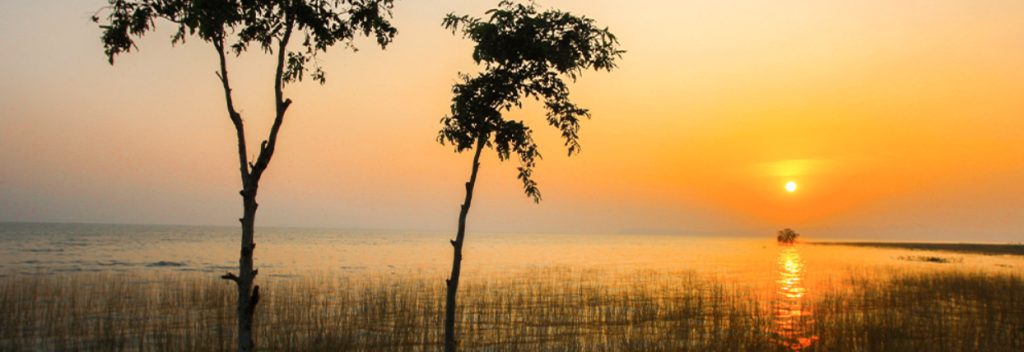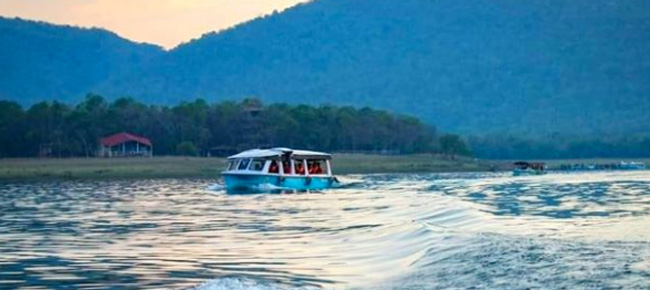Sambalpur: India’s G20 Sherpa and the architect of “Incredible India,” Amitabh Kant, has unequivocally crowned Odisha’s Debrigarh Wildlife Sanctuary as the nation’s premier eco-tourism destination. He hailed its community-led model as a global benchmark, asserting it’s “by far the best example of the local community operating and managing the entire Ecotourism project.”
Shri Kant’s emphatic endorsement, made during his recent visit, specifically acknowledged the pivotal role played by stakeholders and State Government.
That guiding hand arrived in the form of Anshu Pragyan Dash, the Divisional Forest Officer (DFO) of the Hirakud Wildlife Division. For the past three to four years, DFO Smt.Dash has spearheaded a transformative movement, breathing new life into Debrigarh’s eco-tourism project with a proactive and visionary approach. Her tenure has been marked by a relentless drive to balance conservation with sustainable tourism, ensuring that the sanctuary’s natural heritage is protected while empowering local communities.
In fact Additional Chief Secretary (Forest, Environment & Climate Change), Satyabrat Sahu, whose visionary leadership and significant funding have propelled Odisha’s eco-tourism initiatives, including Debrigarh, to this exemplary status. This powerful endorsement signals a decisive pivot for India’s burgeoning sustainable travel sector towards global leadership.
Shri Kant, the driving force behind projecting India’s diverse appeal internationally, isn’t just praising; he’s setting a new standard. His visit to Debrigarh wasn’t merely an inspection but a strategic endorsement of a model that seamlessly weaves ecological preservation with profound community empowerment – a model significantly bolstered by the robust support from the Forest Department under ACS Shri Sahu. This, Shri Kant emphasized, is the future of tourism – responsible, inclusive, and globally resonant.
A Model of Community Empowerment and Conservation

During his visit, Shri Kant interacted directly with the 85 forest-dependent families who are now earning their livelihood from Debrigarh’s eco-tourism activities. He lauded their comprehensive involvement in offering a diverse range of experiences for tourists, including Jungle Safaris, Hirakud Cruises, Trekking, Hiking, Kayaking, wildlife storytelling sessions, and bird watching. The sanctuary offers 20 cottages for night stays, including 6 unique Stargazing Rooms with glass roofs, providing an immersive experience for visitors.
Adding a critical layer to Debrigarh’s burgeoning success is the active involvement of key administrative and tourism figures. RDC, Northern Division, Sachin R Jadhav, leveraging his extensive administrative expertise and a strong understanding of tourism development is a vital force in promoting Debrigarh. His proactive engagement with local forest officers and administration, as witnessed by Shri Kant, highlights a concerted effort at the regional level to put Debrigarh on the tourism map.
In addition to it DFO, Anshu Pragyan Dash’s most significant initiatives has been the deep involvement and empowerment of the local communities. Recognizing them as the true custodians of the forest, she oversaw the successful relocation of villages from within the sanctuary, a crucial step for wildlife protection. Following this, she championed a model where over 80% of the eco-tourism revenue directly benefits these very communities. This has translated into tangible improvements in their lives, with villagers, especially women, stepping into roles as confident safari guides, jeep drivers, and managers of nature camps and souvenir shops. Their monthly earnings have provided a stable livelihood, reducing their dependence on forest resources and fostering a strong sense of ownership and pride in the sanctuary’s success. The sight of women confidently navigating the dense forest trails, sharing their intimate knowledge of the wildlife with tourists, is a testament to this empowerment.

The economic impact on the local community is profound: each member working at Debrigarh earns between Rs 13,000 to Rs 15,000 per month. Notably, 40% of the workforce comprises women, including dedicated Lady Safari Drivers and Ecoguides, shattering traditional barriers. This community-driven approach has directly led to enhanced wildlife conservation, as all villages within the sanctuary have been successfully relocated, virtually eliminating man-animal conflict. Scientific habitat management has further bolstered wildlife populations, with tourists regularly sighting large herds of Indian Bisons, Sambar, deer, and even bears.

Beyond the sanctuary, 18 cruise boats are now operational at Hirakud, complemented by a community-run Island Cafe crafted from bamboo and palm trees. Other community-managed initiatives in the region include the Govindpur Birds Village, Dhodrokusum Green Village, and the Veer Surendra Sai Memorial. In a remarkable testament to the transformative power of this model, even former poachers are now employed as Ecoguides, having transitioned into guardians of the very wildlife they once threatened
Beyond community engagement, DFO Dash meticulously structured the tourism operations to ensure minimal disturbance to the wildlife while maximizing visitor experience. She implemented a comprehensive “jungle safari etiquette” – a Standard Operating Procedure (SOP) that governs everything from vehicle carrying capacity (fixed at 53 vehicles per day, allowing only 318 visitors) to maximum speed limits (20 kmph) and maintaining a safe distance between safari vehicles (500 meters). This disciplined approach has not only enhanced animal sightings for tourists but also instilled a culture of responsible wildlife viewing among visitors and staff alike.
Financial Self-Sufficiency and Sustainable Growth
Debrigarh Eco-tourism’s financial success in the year 2024-25 underscores the viability of this model, having generated a record revenue of Rs 5.11 Crore. What truly sets Debrigarh apart is its unique revenue-sharing mechanism, ensuring that 100% of the revenue generated flows back to the community and conservation efforts. According to eco-tourism guidelines:
- 35% is directly shared among local communities as wages.
- 25% is utilized for recurring expenses.
- 10% is allocated for infrastructure development.
- 10% is dedicated to village development.
- 20% contributes to the Corpus Fund of the Principal Chief Conservator of Forests (Wildlife) for training and capacity building of community members.
This structure makes the local community a major stakeholder, fostering a deep sense of ownership and responsibility for the sanctuary’s protection and conservation. This direct link between economic benefit and environmental stewardship has not only transformed the lives of many forest-dependent communities but has also significantly strengthened wildlife conservation efforts, demonstrating how sustainable tourism can be a powerful tool for both ecological preservation and socio-economic upliftment.


